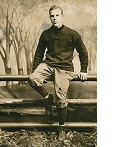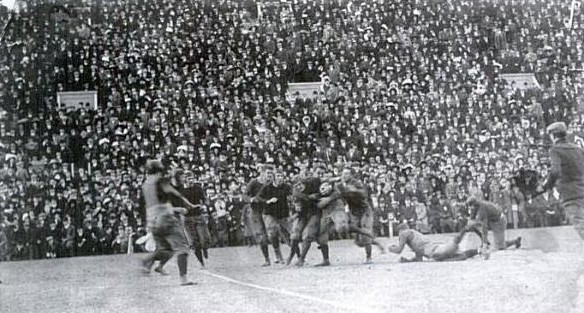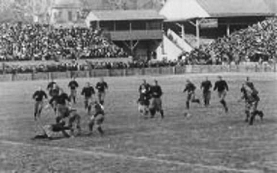 I
wrote summaries of previous Yale seasons for my 1902, 1904, 1905, 1906, and 1907
national
championship
articles. With legitimate claims to 6 MNCs 1900-1909 (the school
claims a 7th for 1901 that is not legitimate), and a 100-4-5 record
against schedules that included the top teams from the toughest region
(annual games with Army, Princeton, and Harvard), Yale is easily the
top football school of the 20th century's first decade. And as far as
performance
goes, this 1909 edition was their best, a fitting climax to a great
run. But Walter Camp was taking less and less of an active
role as Yale's advisory coach, and perhaps it is no coincidence that
1909 was
also the end of Yale's dynasty. They next contend for an MNC in the
1920s.
I
wrote summaries of previous Yale seasons for my 1902, 1904, 1905, 1906, and 1907
national
championship
articles. With legitimate claims to 6 MNCs 1900-1909 (the school
claims a 7th for 1901 that is not legitimate), and a 100-4-5 record
against schedules that included the top teams from the toughest region
(annual games with Army, Princeton, and Harvard), Yale is easily the
top football school of the 20th century's first decade. And as far as
performance
goes, this 1909 edition was their best, a fitting climax to a great
run. But Walter Camp was taking less and less of an active
role as Yale's advisory coach, and perhaps it is no coincidence that
1909 was
also the end of Yale's dynasty. They next contend for an MNC in the
1920s.Yale's official head coach for this season was Hall of Famer Howard Jones, who had played for Yale teams that went 28-0-2 1905-1907, so after 1909 he was still unbeaten (38-0-2) as a player/coach at Yale. Details of his impressive Hall of Fame coaching career can be found in my 1905 article.
Six of 1909's 11 consensus All Americans were Yale starters, and two more Yale starters were consensus AA


